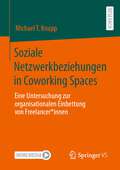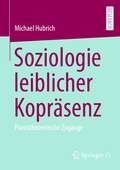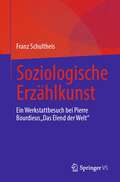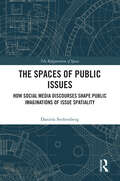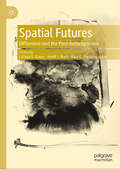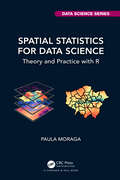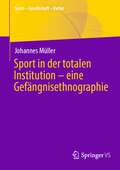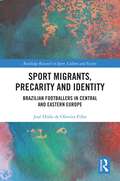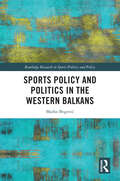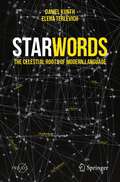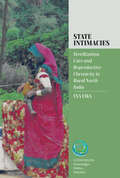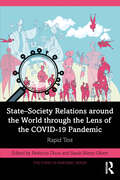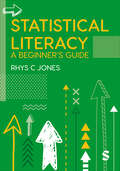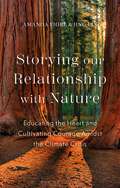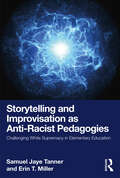- Table View
- List View
Soziale Netzwerkbeziehungen in Coworking Spaces: Eine Untersuchung zur organisationalen Einbettung von Freelancer*innen
by Michael T. KnappDie Studie von Michael Knapp befasst sich mit den sozialen Netzwerkbeziehungen von Freelancer*innen im Kontext von Coworking Spaces als flexibel nutzbare Büro- und Arbeitsräumlichkeiten. Dabei wird insbesondere auf die Bedeutung dieses Kontexts in Bezug auf die Beziehungs- und Netzwerkbildung eingegangen und gezeigt, wie die Nutzung eines Arbeitsplatzes in diesem zur organisationalen Einbettung im Freelancing beitragen kann. Dazu greift die Arbeit auf Methoden der egozentrierten Netzwerkanalyse in Kombination mit qualitativen Interviews zurück. Anhand von persönlichen Freelancer*innen-Netzwerken, biografischen und sozial-räumlichen Hintergründen werden verschiedene Beziehungsinhalte und -konstellationen deutlich gemacht, die sich aus der Arbeit im Coworking Space ergeben können. Die Studie trägt damit zum Verständnis von Coworking Spaces für unternehmerische Prozesse im Freelancing bei und verweist auf die Relevanz von sozial-räumlicher Kontextualisierung.
Soziologie leiblicher Kopräsenz: Praxistheoretische Zugänge
by Michael HubrichDas Buch stellt die sozialtheoretische Frage nach der besonderen Qualität leiblicher Kopräsenz, verstanden als Urszene des Sozialen, und beantwortet sie mit den Mitteln einer leibphänomenologisch instruierten Praxistheorie. Ausgehend von einer Kritik am Cartesianismus klassischer Intersubjektivitäts-, Interaktions- und Kommunikationstheorien wird ein sich gegen tradierte epistemologische Dualismen richtendes und relational formuliertes Vokabular entwickelt, welches sich maßgeblich an den Begriffen der Praxis und des Leibes orientiert. Dadurch ist es möglich, die Sozialität in gemeinsamer Anwesenheit als ein sich in Wahrnehmung und Bewegung entfaltendes und dadurch affektives wie habituelles Praxisgeschehen zu erfassen. Im Zentrum des Buches stehen damit praxistheoretische Zugänge für eine Soziologie leiblicher Kopräsenz, mit denen (über-)situative Qualitäten der Mit-Anwesenheit soziologisch sicht- und analysierbar werden.
Soziologische Erzählkunst: Ein Werkstattbesuch bei Pierre Bourdieus „Das Elend der Welt“
by Franz SchultheisVor drei Jahrzehnten legten Pierre Bourdieu und sein Team eine aufsehenerregende soziologische Studie zum Thema "Das Elend der Welt" vor. Sie hatte für ein wissenschaftliches Werk von fast 1000 Seiten Umfang einen ganz erstaunlichen Publikumserfolg, wurde aber auch angesichts ihrer mit vielen Regeln des akademischen Betriebs bewusst brechenden Forschungsstrategien, Methoden und literarisch anmutenden Erzählkunst zur Zielscheibe heftiger Kritik. Oft war die Rede von einem Bruch mit den für Bourdieu bis dahin kennzeichnenden "Regeln der soziologischen Methode", und es wurde viel darüber spekuliert, wie diese Form vermeintlich "undisziplinierten" Forschens zu verstehen sei. Dank der Entdeckung bislang unbekannter Quellen im Pariser Pierre Bourdieu-Archiv ist es uns jetzt möglich, einen direkten Einblick in die Forschungswerkstatt Bourdieus zu bekommen und die Entstehung dieser bedeutenden soziologischen Studie Schritt für Schritt zu rekonstruieren. Anhand der persönlichen Aufzeichnungen Bourdieus und der Protokolle der Teamsitzungen wird hierbei die Praxis des Forschens selbst – von Fragen der Interviewtechnik, über Stichprobenziehung und Transkriptionsmethoden bis hin zur Komposition einer komplexen gesellschaftstheoretischen Collage – zum Gegenstand wissenschaftlicher Objektivierung und kritischer Reflexion im Hinblick auf die Möglichkeiten und Grenzen soziologischer Erzählkunst.
The Spaces of Public Issues: How Social Media Discourses Shape Public Imaginations of Issue Spatiality (The Refiguration of Space)
by Daniela StoltenbergIdeas about matters of public concern are shaped by the spaces associated with them: Events occur in particular places, political regulations apply to specific territories, people in different locations are differentially affected by issues. Yet, political communication research has neglected the question of how the spaces of public issues are constructed in the public sphere. This is especially true for research on social media communication, which is often perceived as placeless. Yet, social media discourses are driven by unequal attention patterns based on users’ interests, resources, and abilities. To understand how these patterns manifest spatially, this interdisciplinary monograph builds on public spheres theory, communication infrastructure theory, and urban sociology to develop the framework of issue spatiality. It focuses on how social media users discuss different places in urban policy issue discourses. By applying the framework to four large-scale Twitter discourses on housing markets and cycling infrastructure in two German cities, Berlin and Frankfurt, the research reveals the spatial patterns and inequalities of social media discourses. It demonstrates that digital discourses are overwhelmingly focused on a small number of places in the urban center. These places emerge as the locus of activism and political controversy, while the urban periphery remains hidden or is discussed in purely administrative terms. Places with dense civic infrastructure and privileged residents receive disproportionate attention. The book provides an in-depth look at the ways in which socio-spatial inequalities are inscribed in public communication and shape ideas about societal issues.
The Spaces of Public Issues: How Social Media Discourses Shape Public Imaginations of Issue Spatiality (The Refiguration of Space)
by Daniela StoltenbergIdeas about matters of public concern are shaped by the spaces associated with them: Events occur in particular places, political regulations apply to specific territories, people in different locations are differentially affected by issues. Yet, political communication research has neglected the question of how the spaces of public issues are constructed in the public sphere. This is especially true for research on social media communication, which is often perceived as placeless. Yet, social media discourses are driven by unequal attention patterns based on users’ interests, resources, and abilities. To understand how these patterns manifest spatially, this interdisciplinary monograph builds on public spheres theory, communication infrastructure theory, and urban sociology to develop the framework of issue spatiality. It focuses on how social media users discuss different places in urban policy issue discourses. By applying the framework to four large-scale Twitter discourses on housing markets and cycling infrastructure in two German cities, Berlin and Frankfurt, the research reveals the spatial patterns and inequalities of social media discourses. It demonstrates that digital discourses are overwhelmingly focused on a small number of places in the urban center. These places emerge as the locus of activism and political controversy, while the urban periphery remains hidden or is discussed in purely administrative terms. Places with dense civic infrastructure and privileged residents receive disproportionate attention. The book provides an in-depth look at the ways in which socio-spatial inequalities are inscribed in public communication and shape ideas about societal issues.
Spatial Futures: Difference and the Post-Anthropocene
by LaToya E. Eaves Heidi J. Nast Alex G. PapadopoulosSpatial Futures invites readers to imagine power and freedom through the lens of the ‘Black Outdoors’, a transdisciplinary spatial concept that operates beyond the planetary, stratigraphic confines of the ‘Anthropocene’. The chapters collectively point to the ontological-epistemological contradictions involved in forging liberatory spatial futures. Bringing new spatial imaginaries to bear in and outside geography, the book refuses the strictures of the ‘cenic’, entertaining difference as world-making.
Spatial Statistics for Data Science: Theory and Practice with R (Chapman & Hall/CRC Data Science Series)
by Paula MoragaSpatial data is crucial to improve decision-making in a wide range of fields including environment, health, ecology, urban planning, economy, and society. Spatial Statistics for Data Science: Theory and Practice with R describes statistical methods, modeling approaches, and visualization techniques to analyze spatial data using R. The book provides a comprehensive overview of the varying types of spatial data, and detailed explanations of the theoretical concepts of spatial statistics, alongside fully reproducible examples which demonstrate how to simulate, describe, and analyze spatial data in various applications. Combining theory and practice, the book includes real-world data science examples such as disease risk mapping, air pollution prediction, species distribution modeling, crime mapping, and real state analyses. The book utilizes publicly available data and offers clear explanations of the R code for importing, manipulating, analyzing, and visualizing data, as well as the interpretation of the results. This ensures contents are easily accessible and fully reproducible for students, researchers, and practitioners. Key Features: Describes R packages for retrieval, manipulation, and visualization of spatial data Offers a comprehensive overview of spatial statistical methods including spatial autocorrelation, clustering, spatial interpolation, model-based geostatistics, and spatial point processes Provides detailed explanations on how to fit and interpret Bayesian spatial models using the integrated nested Laplace approximation (INLA) and stochastic partial differential equation (SPDE) approaches
Spatial Statistics for Data Science: Theory and Practice with R (Chapman & Hall/CRC Data Science Series)
by Paula MoragaSpatial data is crucial to improve decision-making in a wide range of fields including environment, health, ecology, urban planning, economy, and society. Spatial Statistics for Data Science: Theory and Practice with R describes statistical methods, modeling approaches, and visualization techniques to analyze spatial data using R. The book provides a comprehensive overview of the varying types of spatial data, and detailed explanations of the theoretical concepts of spatial statistics, alongside fully reproducible examples which demonstrate how to simulate, describe, and analyze spatial data in various applications. Combining theory and practice, the book includes real-world data science examples such as disease risk mapping, air pollution prediction, species distribution modeling, crime mapping, and real state analyses. The book utilizes publicly available data and offers clear explanations of the R code for importing, manipulating, analyzing, and visualizing data, as well as the interpretation of the results. This ensures contents are easily accessible and fully reproducible for students, researchers, and practitioners. Key Features: Describes R packages for retrieval, manipulation, and visualization of spatial data Offers a comprehensive overview of spatial statistical methods including spatial autocorrelation, clustering, spatial interpolation, model-based geostatistics, and spatial point processes Provides detailed explanations on how to fit and interpret Bayesian spatial models using the integrated nested Laplace approximation (INLA) and stochastic partial differential equation (SPDE) approaches
Sport in der totalen Institution – eine Gefängnisethnographie (Sport – Gesellschaft – Kultur)
by Johannes MüllerJustizvollzugsanstalten müssen Gefangenen die Möglichkeit anbieten, sich sportlich zu betätigen. Basierend auf mehrjähriger ethnographischer Forschung in einem Gefängnis untersucht das Buch die vielschichtigen Bedeutungen, die der Sport aus Sicht der Gefangenen besitzt. Die Befunde zeigen, dass sich Sport für einen Teil der männlichen Insassen als Bewältigungsstrategie zur Linderung der hafttypischen Belastungen erweist, indem er Freiheitsmomente birgt und Möglichkeiten eröffnet, gefängnistypischen Gefühlen von Angst, Einsamkeit, Langeweile und mentaler Niedergeschlagenheit zu begegnen. Darüber hinaus stellt der Sport ein probates Mittel zur Konstruktion bzw. Verteidigung von Männlichkeit, zur Selbstaufwertung und zur Positionierung in der sozialen Hierarchie unter den Gefangenen dar. Die Befunde zeigen weiterhin, dass speziell die Teilhabe an anstaltsorganisierten Sportangeboten voraussetzungsvoll ist und das besondere Gefängnissetting viele Inhaftierte von einer Sportteilhabe abhält.
Sport Migrants, Precarity and Identity: Brazilian Footballers in Central and Eastern Europe (Routledge Research in Sport, Culture and Society)
by José Hildo de Oliveira FilhoThis book takes a close look at the experiences of migrant athletes, their precarious careers, and at what this can tell us about wider themes of globalisation, identity, race, gender, and the body.Based on in-depth ethnographic research on male Brazilian footballers and futsal players working in Central and Eastern Europe, this book helps to fill gaps in previous research on sports migration and global sports labor markets. This book uses life-history interviews to reveal how race, gender, and class are articulated in the everyday experiences of migrant athletes; how they express their religious affiliations; and how they navigate the relationships with injuries and pain that are characteristic of precarious athletic careers. This book considers the transnational networks that are essential in sustaining international athletic labor flows and the role that borders and emotions play in the lives of sports migrants and also the agency that migrant athletes can have in issues such as player development and retention.Presenting a more nuanced, ground-level perspective on sports migration and the sociological dialogue between identity, culture, and the body, this book is fascinating reading for anybody with an interest in the socio-cultural study of sport, migration, globalization, or global inequalities.
Sport Migrants, Precarity and Identity: Brazilian Footballers in Central and Eastern Europe (Routledge Research in Sport, Culture and Society)
by José Hildo de Oliveira FilhoThis book takes a close look at the experiences of migrant athletes, their precarious careers, and at what this can tell us about wider themes of globalisation, identity, race, gender, and the body.Based on in-depth ethnographic research on male Brazilian footballers and futsal players working in Central and Eastern Europe, this book helps to fill gaps in previous research on sports migration and global sports labor markets. This book uses life-history interviews to reveal how race, gender, and class are articulated in the everyday experiences of migrant athletes; how they express their religious affiliations; and how they navigate the relationships with injuries and pain that are characteristic of precarious athletic careers. This book considers the transnational networks that are essential in sustaining international athletic labor flows and the role that borders and emotions play in the lives of sports migrants and also the agency that migrant athletes can have in issues such as player development and retention.Presenting a more nuanced, ground-level perspective on sports migration and the sociological dialogue between identity, culture, and the body, this book is fascinating reading for anybody with an interest in the socio-cultural study of sport, migration, globalization, or global inequalities.
Sports Policy and Politics in the Western Balkans (Routledge Research in Sport Politics and Policy)
by Marko BegovićThis book examines how states in the post-socialist Western Balkans region have used sport as a policy tool, and how sport in the region has been shaped by politics, history, and culture. Looking closely at the intersection of sports policy and politics in the countries of Serbia, Montenegro, Croatia, and Bosnia and Herzegovina, this book explores the roles of sport in nation-building and how sport has been used by regimes looking to establish political legitimacy in the transition from the post-socialist era. It offers a fascinating insight into the way that sport has been co-opted for political purposes, and into the complexities of formulating sports policy and wider public policy in societies in which governance structures may be weak and in which clientelism, corruption, and partisanship pose constant challenges. This book is fascinating reading for anybody with an interest in the history and politics of sport, in public policy, or in the history, politics, and culture of the former Yugoslav countries.
Sports Policy and Politics in the Western Balkans (Routledge Research in Sport Politics and Policy)
by Marko BegovićThis book examines how states in the post-socialist Western Balkans region have used sport as a policy tool, and how sport in the region has been shaped by politics, history, and culture. Looking closely at the intersection of sports policy and politics in the countries of Serbia, Montenegro, Croatia, and Bosnia and Herzegovina, this book explores the roles of sport in nation-building and how sport has been used by regimes looking to establish political legitimacy in the transition from the post-socialist era. It offers a fascinating insight into the way that sport has been co-opted for political purposes, and into the complexities of formulating sports policy and wider public policy in societies in which governance structures may be weak and in which clientelism, corruption, and partisanship pose constant challenges. This book is fascinating reading for anybody with an interest in the history and politics of sport, in public policy, or in the history, politics, and culture of the former Yugoslav countries.
Städte auf dem Weg zur Nachhaltigkeit: Ethnographische Einblicke und Analysen (VerKörperungen/MatteRealities - Perspektiven empirischer Wissenschaftsforschung #28)
by Britta AckselAngesichts von Extremwetterereignissen, Klimaprognosen und Bewegungen wie Fridays for Future lässt sich schwer leugnen, dass ein Teil der Menschheit auf eine Weise lebt, die eine gut bewohnbare Welt höchst unwahrscheinlich macht. Städten wird in dieser Situation eine zentrale Rolle zugeschrieben. Sie können die Welt vor der Erderwärmung retten - oder sie sind die Ersten, die untergehen. Doch was genau wird getan, um Städte in Richtung Nachhaltigkeit zu transformieren? Britta Acksel nimmt Aktionspläne, Klimafestivals, Awards und weitere Transformationsinstrumente in den Blick. Ethnographisch fundiert zeigt sie auf, wie sich die Arbeit mit dieser speziellen Form von Policy-Werkzeugen gestaltet - und welche Bemühungen besonders aussichtsreich erscheinen.
StadtTeilen: Neue Praktiken gemeinschaftlicher Nutzung urbaner Räume (Urban Studies)
by Floris Bernhardt Nada Bretfeld Josefine Buzwan-Morell Helena Cermeño Sina Doukas Elisabeth Güde Constantin Hörburger Carsten Keller Florian KochPraktiken des Teilens stellen Möglichkeiten dar, Stadt alternativ zu gestalten, und sind zugleich komplexe Aushandlungsprozesse. Kann der Schulhof abends von der Nachbarschaft genutzt werden? Oder hat die Hausgemeinschaft Interesse an einem gemeinsamen Garten und Veranstaltungsraum? Offen ist, was solidarische und widerständige Praxen des Teilens begünstigt und welche architektonischen Interventionen die Teilbarkeit von öffentlichem Raum erleichtern. Auf der Grundlage empirischer Studien in drei deutschen Städten und einem Praxislabor werden Praktiken des Teilens, ihre Bedingungen, Potenziale und Grenzen untersucht. Die Autor*innen liefern Denkanstöße für Politik, Verwaltung, Wissenschaft, Initiativen und Wohnungsunternehmen.
StarWords: The Celestial Roots of Modern Language (Springer Praxis Books)
by Daniel Kunth Elena TerlevichUnbeknownst to many, our modern language contains countless words that were inspired by human observations of the cosmos. We now use words like “zenith”, “Monday”, “disaster”, “dog days”, “starfish”, “lunatic”, flu, and so many others, without a second thought for their celestial roots. Famous French astrophysicist Daniel Kunth invites you on a linguistic and scientific journey through space and time to explore these forgotten origins. You will be astonished to rediscover cosmic language hidden in plain sight through this wonderful collection of historical and cultural stories, famous idioms and delightful puns, along with the real science behind each one. Elena Terlevich is a well known professional astronomer working at INAOE in Mexico, an honorary Professor at La Plata University in Argentina and a regular visitor at the Institute of Astronomy in Cambridge (UK). Requiring no prior knowledge in astronomy or linguistics, this book’s universal contentsinvite the reader to ponder how our observations of the night sky have shaped our modern tongue and customs.
State Intimacies: Sterilization, Care and Reproductive Chronicity in Rural North India (Lifeworlds: Knowledges, Politics, Histories #4)
by Eva FiksThe public healthcare system in rural India is chronically under-resourced. It embodies and often perpetuates the wider politics of the Indian state towards its rural communities with provisions of care that are deeply entangled with violence and disgust. For rural women, such care deepens reproductive chronicity while providing temporary relief. Grounded in women’s everyday realities and experiences in sterilization camps and other healthcare settings in rural Rajasthan, State Intimacies examines the mundane workings, ambiguities and fragilities of care in post-colonial rural North India.
State–Society Relations around the World through the Lens of the COVID-19 Pandemic: Rapid Test (The COVID-19 Pandemic Series)
by Federica Duca Sarah Meny-GibertThe collection examines state–society relations during the COVID-19 pandemic, from governance at the outset of the pandemic to vaccine rollouts, via a series of case studies from around the world. With a focus on the Global South, the book includes chapters on the experiences of – Angola, Zimbabwe, South Africa, Bolivia, Argentina, Brazil, Jamaica and Indonesia as well as contributions from the Global North – on Sweden, Canada, Czech Republic and New Zealand. The collection demonstrates that the effects of the pandemic can only be properly revealed by looking at the regional and local contexts in which states and societies experienced it. Contributors examine themes such as the nature of contemporary democracy, state capacity, the legitimacy of state institutions, and trust in government, questions of social solidarity, and forms and impacts of inequality. Focusing on national (or sub-national) cases, each chapter analyses the underlying forces and structures revealed when the authority of the state is brought to bear on the agency of citizens under emergency conditions. In doing so, contributors embed analysis of pandemic governance in the historical context of each country or region, highlighting how political choices, histories of the state’s treatment of citizens and the orientations of a region’s elites shaped the actions taken by the state. The book will be of interest to those looking to understand how the pandemic was interpreted, accepted, or contested at the local (national or sub-national) level and to those interested in state–society relations more generally. It will appeal to scholars and students interested in questions of pandemic government from a social scientific point of view and especially to those interested in perspectives from the Global South.
State–Society Relations around the World through the Lens of the COVID-19 Pandemic: Rapid Test (The COVID-19 Pandemic Series)
The collection examines state–society relations during the COVID-19 pandemic, from governance at the outset of the pandemic to vaccine rollouts, via a series of case studies from around the world. With a focus on the Global South, the book includes chapters on the experiences of – Angola, Zimbabwe, South Africa, Bolivia, Argentina, Brazil, Jamaica and Indonesia as well as contributions from the Global North – on Sweden, Canada, Czech Republic and New Zealand. The collection demonstrates that the effects of the pandemic can only be properly revealed by looking at the regional and local contexts in which states and societies experienced it. Contributors examine themes such as the nature of contemporary democracy, state capacity, the legitimacy of state institutions, and trust in government, questions of social solidarity, and forms and impacts of inequality. Focusing on national (or sub-national) cases, each chapter analyses the underlying forces and structures revealed when the authority of the state is brought to bear on the agency of citizens under emergency conditions. In doing so, contributors embed analysis of pandemic governance in the historical context of each country or region, highlighting how political choices, histories of the state’s treatment of citizens and the orientations of a region’s elites shaped the actions taken by the state. The book will be of interest to those looking to understand how the pandemic was interpreted, accepted, or contested at the local (national or sub-national) level and to those interested in state–society relations more generally. It will appeal to scholars and students interested in questions of pandemic government from a social scientific point of view and especially to those interested in perspectives from the Global South.
Statistical Literacy: A Beginner′s Guide
by Rhys Christopher JonesIn an increasingly data-centric world, we all need to know how to read and interpret statistics. But where do we begin? This book breaks statistical terms and concepts down in a clear, straightforward way. From understanding what data are telling you to exploring the value of good storytelling with numbers, it equips you with the information and skills you need to become statistically literate. It also: Dispels misconceptions about the nature of statistics to help you avoid common traps. Helps you put your learning into practice with over 60 Tasks and Develop Your Skills activities. Draws on real-world research to demonstrate the messiness of data – and show you a path through it. Approachable and down to earth, this guide is aimed at undergraduates across the social sciences, psychology, business and beyond who want to engage confidently with quantitative methods or statistics. It forms a reassuring aid for anyone looking to understand the foundations of statistics before their course advances, or as a refresher on key content.
Statistical Literacy: A Beginner′s Guide
by Rhys Christopher JonesIn an increasingly data-centric world, we all need to know how to read and interpret statistics. But where do we begin? This book breaks statistical terms and concepts down in a clear, straightforward way. From understanding what data are telling you to exploring the value of good storytelling with numbers, it equips you with the information and skills you need to become statistically literate. It also: Dispels misconceptions about the nature of statistics to help you avoid common traps. Helps you put your learning into practice with over 60 Tasks and Develop Your Skills activities. Draws on real-world research to demonstrate the messiness of data – and show you a path through it. Approachable and down to earth, this guide is aimed at undergraduates across the social sciences, psychology, business and beyond who want to engage confidently with quantitative methods or statistics. It forms a reassuring aid for anyone looking to understand the foundations of statistics before their course advances, or as a refresher on key content.
Statistical Literacy: A Beginner′s Guide
by Rhys Christopher JonesIn an increasingly data-centric world, we all need to know how to read and interpret statistics. But where do we begin? This book breaks statistical terms and concepts down in a clear, straightforward way. From understanding what data are telling you to exploring the value of good storytelling with numbers, it equips you with the information and skills you need to become statistically literate. It also: Dispels misconceptions about the nature of statistics to help you avoid common traps. Helps you put your learning into practice with over 60 Tasks and Develop Your Skills activities. Draws on real-world research to demonstrate the messiness of data – and show you a path through it. Approachable and down to earth, this guide is aimed at undergraduates across the social sciences, psychology, business and beyond who want to engage confidently with quantitative methods or statistics. It forms a reassuring aid for anyone looking to understand the foundations of statistics before their course advances, or as a refresher on key content.
Storying our Relationship with Nature: Educating the Heart and Cultivating Courage Amidst the Climate Crisis
by Amanda Fiore Jing LinThis book takes readers on a journey that is part storytelling, part academic analysis, and part spiritual exploration. The authors identify the climate emergency as a breakdown in spiritual consciousness which fails to recognize our deep interconnection with Nature. To meet this crisis of spirit, Storying Our Relationship with Nature serves as a guide for transforming ourselves and our lives through story and highlights the importance of social and emotional aspects of environmental education.The authors introduce the philosophical and historical foundations of our objectification of Nature as a commodity and describe the effect this view has on our lives. They detail a path forward through storytelling, contemplative practice, Eastern philosophy, and the transformative power of education. Throughout the book, reflective activities provide a space for the reader to personalize their learning, leading the reader towards the book's central message: once we learn to consciously re-story our relationship with Nature, we can transform our cultural narrative of fatalism and greed into one of love, determination, and possibility, helping us move towards a sustainable future.
Storytelling and Improvisation as Anti-Racist Pedagogies: Challenging White Supremacy in Elementary Education
by Samuel Jaye Tanner Erin T. MillerThis book theorizes and describes the concept of transformative critical whiteness pedagogies that are rooted in theories and practices of improvisation. It shows how these pedagogies invite people, especially white people, into the urgent work of resisting the ongoing production and affirmation of white supremacy.Using the frameworks of storytelling and story analysis, this book uses narrative to invite the reader into ongoing work to design and make sense of teaching and learning about whiteness that would meaningfully account for a grapple with white supremacy. Chapter 1 offers the conceptual framework rooted in theories and practices of improvisation that allow for new ways to think about engaging whiteness in anti-racist pedagogies, which the authors name transformative critical whiteness pedagogies. Chapters 2–4 tell and analyze the stories that emerged out of this work to design and facilitate transformative critical whiteness pedagogies with white elementary students, white college students, and then black elementary students in the US. Chapters 5 and 6 discuss the challenges of developing and implementing transformative critical whiteness pedagogies in K-12 contexts. The final chapters offer a discussion of the improvisational ethos, as well as an overview of the authors’ ongoing work to engage people, especially white people, in getting smarter about whiteness.Using simple, straightforward language to address complex ideas about anti-racist pedagogies, this volume will be important reading for pre-service teachers and teacher educators in Critical Whiteness Studies, Critical Multicultural Education, Social Foundations of Education, Elementary Education, and Race and Culture Studies.
Storytelling and Improvisation as Anti-Racist Pedagogies: Challenging White Supremacy in Elementary Education
by Samuel Jaye Tanner Erin T. MillerThis book theorizes and describes the concept of transformative critical whiteness pedagogies that are rooted in theories and practices of improvisation. It shows how these pedagogies invite people, especially white people, into the urgent work of resisting the ongoing production and affirmation of white supremacy.Using the frameworks of storytelling and story analysis, this book uses narrative to invite the reader into ongoing work to design and make sense of teaching and learning about whiteness that would meaningfully account for a grapple with white supremacy. Chapter 1 offers the conceptual framework rooted in theories and practices of improvisation that allow for new ways to think about engaging whiteness in anti-racist pedagogies, which the authors name transformative critical whiteness pedagogies. Chapters 2–4 tell and analyze the stories that emerged out of this work to design and facilitate transformative critical whiteness pedagogies with white elementary students, white college students, and then black elementary students in the US. Chapters 5 and 6 discuss the challenges of developing and implementing transformative critical whiteness pedagogies in K-12 contexts. The final chapters offer a discussion of the improvisational ethos, as well as an overview of the authors’ ongoing work to engage people, especially white people, in getting smarter about whiteness.Using simple, straightforward language to address complex ideas about anti-racist pedagogies, this volume will be important reading for pre-service teachers and teacher educators in Critical Whiteness Studies, Critical Multicultural Education, Social Foundations of Education, Elementary Education, and Race and Culture Studies.
